Top Strategies for Effective Inventory Management in 2025

Last updated on April 17, 2025

In this article
 16 minutes
16 minutes
- Key Takeaways
- Understanding Inventory Management
- Types of Inventory
- Inventory Management Techniques
- Inventory Management Systems
- Demand Planning and Forecasting
- Inventory Control Best Practices
- Technology in Inventory Management
- Industry-Specific Inventory Management Tips
- Future Trends in Inventory Management
- Summary
- Frequently Asked Questions
Inventory management involves overseeing stock to meet customer demand while minimizing costs. Effective inventory management keeps businesses running smoothly.
In this article, you’ll discover key strategies for mastering inventory management in 2025. We’ll explore inventory management concepts, inventory role, inventory management objectives, inventory types, systems and controls of inventory management, technology considerations, best practices and industry tips in inventory management, planning and forecasting demand, future trends and possible predictions, and more.
Key Takeaways
- Effective inventory management is crucial for balancing customer demands with storage costs, helping to optimize the supply chain and minimize waste.
- Different inventory types—raw materials, work-in-progress, and finished goods—require unique management strategies to ensure efficiency and meet demand.
- Emerging technologies like AI, RFID, and cloud-based solutions are transforming inventory management, enhancing visibility, accuracy, and responsiveness.
Slash Your Fulfillment Costs by Up to 30%
Cut shipping expenses by 30% and boost profit with Cahoot's AI-optimized fulfillment services and modern tech —no overheads and no humans required!
I'm Interested in Saving Time and MoneyUnderstanding Inventory Management
Inventory management is pretty much the backbone of any successful business operation. At its core, it’s all about overseeing and controlling the ordering, storage, and use of components that a company uses in the production of the items it sells. This means managing stock levels, integrating with business operations, and tracking the flow of products from suppliers to customers—essentially, all the key inventory management processes.
So, why is inventory management such a big deal? Well, it helps balance what customers expect with what you can store and afford, ensuring that you don’t end up with too much or too little of what you need. Poor inventory management can lead to wasted time, resources, and money, which can really hurt a company’s financial health. But when inventory management is done right, it keeps the supply chain humming along smoothly, giving you visibility into procurement, production, and fulfillment processes.
And let’s not forget how logistics and inventory management are like best buddies. Efficient logistics heavily depend on accurate inventory data to meet customer demands quickly. Inventory management goes beyond just tracking stock; it’s about optimizing the entire supply chain to boost business performance.
The Role of Inventory in Business Operations
Inventory plays a huge role in various business functions, influencing both production efficiency and sales effectiveness. By analyzing sales data across different channels, businesses can forecast demand accurately, ensuring they have enough inventory to meet customer needs. This not only streamlines the production process but also enhances sales effectiveness, positively impacting overall business performance.
Material Requirements Planning (MRP) is another critical aspect, helping determine inventory needs based on expected demand. MRP streamlines the inventory process by ensuring that businesses have the necessary materials ready for production, reducing the risk of production delays and inefficiencies.
In a nutshell, effective inventory management aligns inventory levels with business operations, fostering a more efficient and responsive supply chain, highlighting the benefits of inventory management.
Key Objectives of Inventory Management
The main goal of inventory management is to find that sweet spot between having enough stock and keeping inventory investment low. This means keeping just enough stock to satisfy customer demand while avoiding excess inventory that ties up capital and racks up storage costs. Hitting this balance is crucial for optimizing stock levels and boosting cash flow.
Effective inventory management aims to cut losses and improve operational efficiency by minimizing excess stock. Proper inventory control ensures that businesses maintain the right stock levels, keep costs in check, and steer clear of overstocking or stockouts. Ultimately, the goal is to support smooth and continuous business operations and meet customer expectations.
Types of Inventory
Different types of inventory must be managed effectively, including raw materials, work-in-progress (WIP), and finished goods. Each type plays a unique role in the production process and requires specific management strategies.
Let’s dive into each type to understand their significance and management better.
Raw Materials
Raw materials are the basic building blocks used in the manufacturing process, essential for creating finished products. These can range from unprocessed items to components that need a bit of processing. Managing raw materials involves keeping track of these components to make sure they’re ready for production schedules. For example, Material Requirements Planning (MRP) helps businesses by ensuring they have the right amount of material for production, minimizing the risk of shortages.
Effective raw materials management also involves balancing ordering costs with holding costs to minimize overall inventory expenses. The Economic Order Quantity (EOQ) approach is particularly handy here, as it helps businesses save on costs by figuring out the most economical order size to meet demand without overstocking.
Accurate demand planning is key to aligning production and distribution, thereby minimizing both shortages and excess inventory.
Work-in-Progress (WIP)
Work-in-progress (WIP) inventory includes partially finished goods that are still going through the manufacturing process. Managing WIP inventory is necessary for ensuring a smooth and continuous production cycle, helping meet customer demand effectively.
However, balancing material availability with production timelines can be tricky, making it essential to monitor and manage WIP inventory closely to avoid production delays.
Finished Goods
Finished goods are products that have completed all stages of production and are ready for sale. Effective management of finished goods inventory is essential for meeting customer demand and minimizing missed sales opportunities. Aligning inventory levels with actual sales patterns through effective demand planning helps to avoid excess inventory and stockouts.
Proper management of finished goods involves maintaining optimal stock levels to ensure products are available when customers need them. This not only helps improve cash flow by reducing excess inventory but also enhances customer satisfaction by ensuring timely delivery of products and maintaining safety stock.
Inventory Management Techniques
Several inventory management techniques are available for optimizing stock levels and ensuring product availability. The most common techniques include Just-In-Time (JIT), Economic Order Quantity (EOQ), and ABC analysis. Each technique offers unique benefits and can be tailored to suit different business needs and operational goals.
Just-In-Time (JIT)
Just-In-Time (JIT) inventory management focuses on maximizing efficiency. It aims to lower costs by ensuring that inventory arrives just as production begins. This technique helps businesses avoid having more storage space for inventory than necessary, thereby reducing waste and lowering overall costs. Successful JIT inventory management requires proper forecasting of needs and close relationships with dependable suppliers to ensure timely deliveries.
JIT helps businesses reduce carrying costs and respond swiftly to market changes, avoiding the retention of unused goods and maintaining balanced inventory levels.
Economic Order Quantity (EOQ)
The Economic Order Quantity (EOQ) is a formula. It calculates the optimal order size needed to meet customer demand while staying within budget. The primary objective of EOQ is to minimize over-ordering and waste. Additionally, it aims to reduce storage costs and maximize quantity discounts. This approach is particularly useful when demand, ordering, and holding costs are high, helping businesses minimize overall inventory expenses.
EOQ enables businesses to save costs and maintain the right inventory levels, essential for efficient operations and optimized cash flow.
ABC Analysis
ABC analysis categorizes inventory items based on their importance, helping businesses prioritize management efforts. This technique involves dividing inventory into three classes—A, B, and C—based on value and turnover rate, enabling focused management strategies.
Retailers can use ABC analysis to categorize inventory based on sales volume or profitability, helping prioritize stock management and ensure that high-value items are always in stock.
Inventory Management Systems
An inventory management system is a crucial tool for tracking inventory stock levels and movements. These systems provide real-time visibility into stock across multiple locations, helping businesses manage inventory more effectively.
Critical features in inventory control software include integration with existing systems, additional functionality, and scalability.
Perpetual vs. Periodic Inventory Systems
Perpetual inventory systems provide continuous and immediate updates of inventory numbers, allowing businesses to have immediate access to stock levels, which informs decision-making. Automation and inventory management software assist retailers in tracking stock levels and accurately forecasting demand, complementing the advantages of perpetual inventory systems. However, one challenge of perpetually maintaining inventory records is that they may not accurately reflect the physical stock over time, leading to discrepancies.
On the other hand, periodic inventory systems require manual labor and can disrupt normal business activities. These systems are more prone to fraud due to reliance on less frequent stock counts. While periodic systems might be simpler to implement, they lack the real-time accuracy and efficiency of perpetual systems.
Choosing the Right Inventory Management System
When selecting inventory management software, consider the user experience and the learning curve associated with the system. Scalability is also crucial to ensure that the software can grow alongside your business needs. Integrating inventory management systems with point-of-sale technology helps retailers maintain accurate stock levels in real time.
Selecting the right inventory management system is essential for optimizing stock levels and improving operational efficiency. Factors to consider include the products managed, critical features needed, budget, and the ability to integrate with existing systems. Ensuring that your current staffing situation can support the new software is also important.
Looking for a New 3PL? Start with this Free RFP Template
Cut weeks off your selection process. Avoid pitfalls. Get the only 3PL RFP checklist built for ecommerce brands, absolutely free.
Get My Free 3PL RFPDemand Planning and Forecasting
Demand planning and forecasting are vital components of effective inventory management. By anticipating sales and timing for stock, businesses can prevent obsolete inventory from piling up and ensure they have the optimal mix of profit margin and sales volume.
Real-time inventory visibility provided by technology helps businesses respond to supply and demand changes more effectively.
Demand Forecasting Techniques
Historical sales data is a key component in determining customer demand trends for inventory forecasting. In retail, regularly analyzing sales data allows businesses to adjust inventory levels according to shifting consumer demand. Predictive AI enhances inventory management by enabling more accurate demand forecasting through the analysis of various data inputs. Additionally, qualitative forecasting incorporates subjective insights like market conditions and promotional events to enhance accuracy.
Identifying and accounting for demand outliers is crucial to avoid skewed inventory forecasts. Real-time updates in cloud-based systems help prevent stockouts and overstock situations, ensuring that inventory levels are always aligned with current demand.
Reorder Point (ROP)
The reorder point is the inventory level at which a new order should be placed to prevent stockouts. Calculating the reorder point involves considering lead time and the average daily usage of the inventory item. This formula is designed to trigger replenishment orders before stock depletes, thus avoiding stockouts and ensuring continuous product availability.
Inventory Control Best Practices
Effective inventory control is crucial for ensuring that the right products are available in the right quantities, avoiding both overstocking and stockouts. Different methods such as JIT, EOQ, and ABC analysis help in optimizing stock levels and managing costs.
Technology enhances inventory management by automating tasks, increasing accuracy, and reducing errors. Implementing robust procedures helps businesses manage costs associated with excess inventory and missed sales opportunities.
Regular Stock Audits
Regular physical inventory counts are essential to maintain accurate records and ensure inventory integrity. To enhance accuracy, regular physical inventory counts should complement a perpetual inventory system.
This practice helps identify discrepancies between recorded and physical stock, ensuring that inventory data remains accurate and reliable.
Vendor Managed Inventory (VMI)
Vendor Managed Inventory (VMI) improves inventory accuracy by allowing suppliers to manage stock levels more effectively. Implementing VMI enhances supplier relationships due to increased reliability in supply chains. This approach aligns closely with Just-In-Time (JIT) practices, emphasizing timely deliveries and improved supplier communication.
The overall impact of VMI on inventory management includes improved accuracy, efficiency, and stronger partnerships with suppliers. By allowing suppliers to manage inventory, businesses can focus on other critical areas while ensuring that stock levels remain optimal.
Inventory Optimization Strategies
Balancing inventory levels through optimization strategies minimizes carrying costs while meeting customer demand. JIT focuses on minimizing inventory storage, significantly lowering storage-related expenses. Assessing market trends and customer behavior is key to refining inventory optimization techniques.
Effective inventory optimization strategies involve using advanced techniques and technologies to forecast demand accurately and manage stock levels efficiently. These strategies ensure that businesses maintain just the right amount of inventory to meet customer needs without incurring unnecessary costs.
Technology in Inventory Management
Let’s talk about how technology is shaking things up in inventory management. With the rise of AI, RFID, and IoT, businesses are finding smarter ways to keep track of their stock. These tech tools are game-changers, offering real-time updates and automating the restocking process, which makes everything run smoother and more efficiently.
By weaving advanced technologies into the mix, inventory management is becoming more flexible and ready to adapt to whatever the business world throws at it.
Barcode and RFID Technology
When it comes to tracking inventory, barcode and RFID technology are like your trusty sidekicks. Barcodes help keep tabs on parts and where they’re hanging out, while RFID tags are like the superheroes of inventory tracking—especially the passive ones that don’t even need batteries! These tools are a big win for small businesses looking to cut down on costs.
By adding barcode and RFID tech into the inventory mix, businesses can keep their data spot-on, streamline operations, and cut down on those pesky manual errors. It’s all about working smarter, not harder.
Cloud-Based Inventory Solutions
Cloud-based inventory systems are like having your inventory at your fingertips, no matter where you are. They let businesses keep an eye on stock from any device, making it easy to adjust as needed. Plus, with real-time tracking, you’re always in the know about your inventory levels and can keep them in line with demand.
These cloud solutions are all about flexibility, letting businesses manage their stock remotely and make quick, informed decisions. This tech really steps up inventory management by giving you a clear view of your stock, boosting efficiency, and helping avoid those dreaded stockouts or overstock situations.
Industry-Specific Inventory Management Tips
Every industry has its own quirks when it comes to managing inventory, so tailoring your approach can really pay off. Whether you’re in retail, manufacturing, or healthcare, understanding the unique challenges and needs of your industry is key to nailing inventory management.
Here are some tips to help you optimize inventory practices for your specific industry.
Retail Inventory Management
In retail, it’s all about making sure the shelves are stocked with what customers want. This means setting the right prices and keeping just enough inventory to meet demand without breaking the bank on storage.
By using sales data to forecast demand, retailers can keep their stock levels just right and avoid overstocking.
Manufacturing Inventory Management
For manufacturers, it’s crucial to have enough stock to keep production lines humming along. Effective management means having a clear view of stock levels and keeping tabs on raw materials, parts, work-in-progress, and finished goods.
Timing is everything here—scheduling raw materials to match up with production cycles helps avoid delays and keeps things running smoothly.
Healthcare Inventory Management
In healthcare, inventory management is all about making sure medical supplies are available when needed, while also sticking to strict regulations. Specialized systems help track inventory across different locations, so there’s no shortage of critical supplies.
Keeping a close eye on medical inventory helps minimize waste and ensures that essential supplies are always ready for use. Timely restocking is key to maintaining top-notch patient care and staying compliant with regulations.
Future Trends in Inventory Management
Looking ahead, there are some exciting trends on the horizon for inventory management. As inventory demands grow, finding ways to maximize warehouse space and improve control practices is becoming more important than ever.
Let’s dive into some of the future trends that are set to shake up inventory management.
Artificial Intelligence and Machine Learning
AI and machine learning are like the secret weapons for inventory management, optimizing processes, and cutting down on mistakes. Machine learning is set to take forecasting to the next level, helping businesses predict demand more accurately and adjust inventory accordingly. Plus, generative AI can whip up new data insights to help managers stay ahead of market changes.
With agentic AI making real-time decisions, like tweaking reorder points based on demand, inventory management is poised for a major upgrade, becoming more efficient and responsive to market shifts.
Blockchain for Supply Chain Transparency
Blockchain technology is like a super-secure digital ledger that can bring a whole new level of transparency to supply chains. By offering a clear view of goods as they move, it helps all parties make better decisions. Plus, blockchain’s transparency and security features help cut down on fraud and keep supply chains running smoothly.
Over time, blockchain is expected to enhance inventory visibility and accuracy, ensuring that inventory data is both reliable and tamper-proof.
Scaling Made Easy: Calis Books’ Fulfillment Journey
Learn how Calis Books expanded nationwide, reduced errors, grew sales while cutting headcount, and saved BIG with Cahoot
See Scale JourneySummary
To sum it all up, effective inventory management in 2025 is all about blending smart strategies, cutting-edge tech, and industry-specific practices. From the basics to using AI and blockchain, businesses have plenty of tools to fine-tune their inventory processes. By balancing stock levels, keeping costs low, and boosting visibility, companies can create more efficient and responsive supply chains.
As we look to the future, embracing new technologies will be crucial for staying competitive and meeting the ever-changing demands of the market. By taking these insights and strategies on board, businesses can build a more efficient, resilient, and successful inventory management system.
Frequently Asked Questions
What is the primary goal of inventory management?
The primary goal of inventory management is to ensure you have enough stock on hand to satisfy customer demand while minimizing your investment in inventory. Striking this balance is key to running a successful business.
How does Just-In-Time (JIT) inventory management work?
Just-In-Time (JIT) inventory management works by synchronizing inventory delivery with production schedules, ensuring that materials arrive exactly when needed. This approach helps minimize waste and reduce storage costs. It’s all about efficiency and keeping your operation lean!
What are the benefits of using AI in inventory management?
Using AI in inventory management can significantly optimize processes and improve forecasting accuracy, allowing you to make real-time decisions that align inventory levels with demand. This means less waste and better stock availability for your business!
How does Vendor Managed Inventory (VMI) improve inventory accuracy?
VMI boosts inventory accuracy by enabling suppliers to directly manage stock levels, which leads to better alignment with demand and improves overall efficiency. Plus, it fosters stronger relationships between suppliers and retailers.
What is the role of cloud-based inventory solutions?
Cloud-based inventory solutions are essential for real-time tracking, allowing you to manage your inventory efficiently from anywhere, anytime. They offer the scalability and flexibility that today’s businesses need.

Turn Returns Into New Revenue





